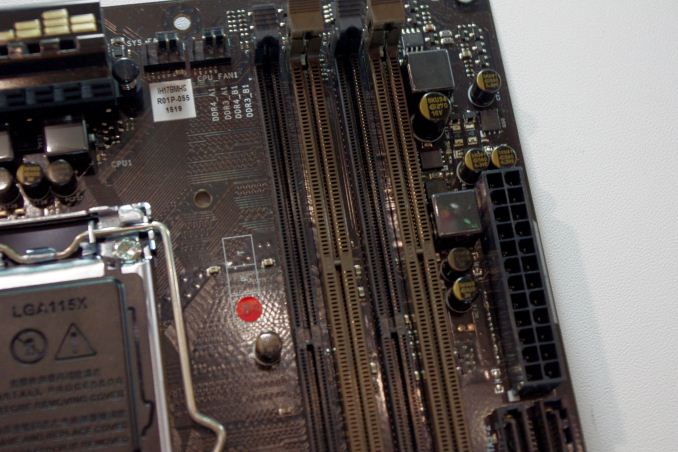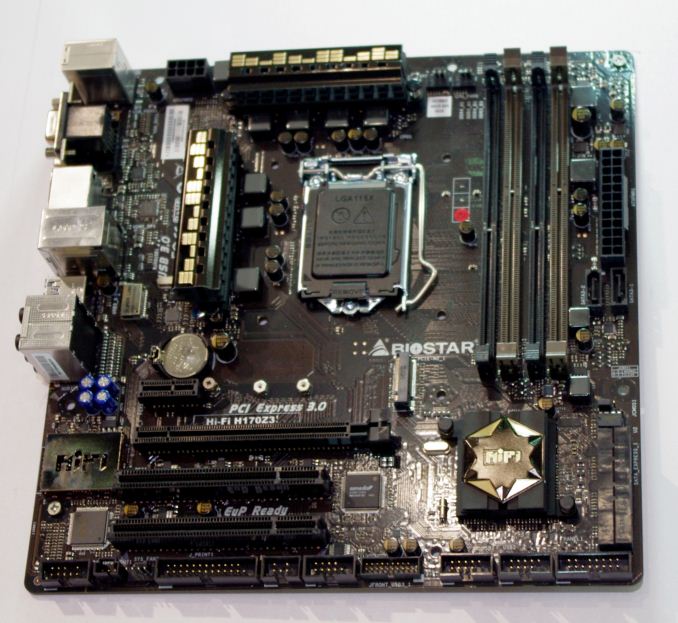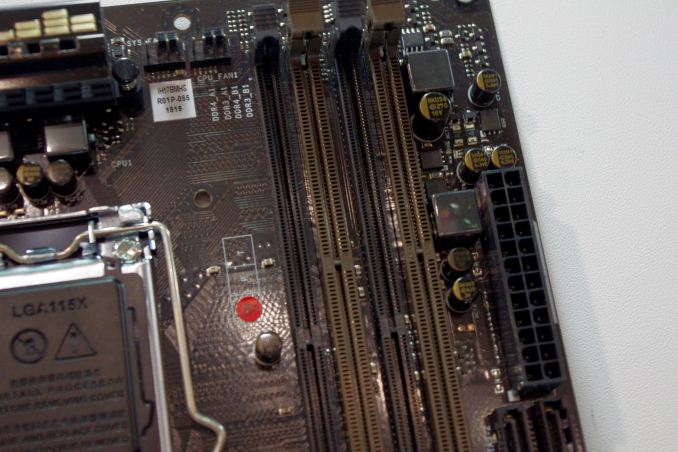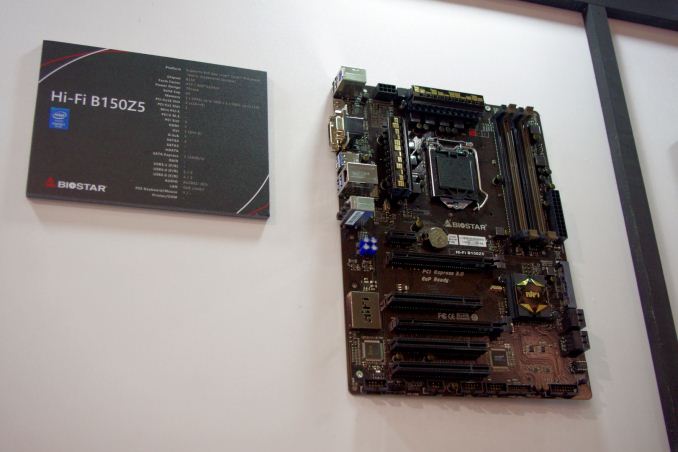Motherboards with DDR3L and DDR4: Biostar
by Ian Cutress on July 2, 2015 4:00 PM EST- Posted in
- Motherboards
- Biostar
- DDR4
- DDR3L
- Skylake
- 100-Series
- H170
- B150

With Intel’s latest extreme platform, Haswell-E and X99, supporting DDR4, all fingers have been pointing towards the state of DDR4 support for the 100-series motherboards and Intel’s 6th generation of processors, Skylake. At Computex we saw a number of 100-series motherboards, although I want to point out a couple which showcase a little of the DRAM support we should expect.
At the Biostar booth there was a H170 motherboard and a B150 motherboard that had clearly defined DDR3 and DDR4 memory slots:
The H170Z3 in show looks similar to a standard mATX motherboard using a single PCIe 3.0 x16, a couple of PCI slots, support for USB 3.0, SATA Express and M.2. It’s the DRAM slots with different spacing that act as the giveaway:
Note at the motherboard it states DDR3_A1 and DDR4_A1. Further questioning at the booth gave us two tidbits of information. Firstly, DDR3 is technically DDR3L, because the 1.35V requirement of DDR3L aligns better with the 1.2V (or 1.35V of high speed) DDR4 requirement. Regular DDR3 may work, though chances are it will not be tested. The other point of information was to be expected, because it mirrors that of the previous changeover – DDR3 and DDR4 cannot be used at the same time. As a result, this motherboard is essentially a one DIMM per channel design, but allows users an upgrade path if they already own DDR3L.
A full sized ATX-based B150Z5 with both DDR3 and DDR4 slots was also on show. It would seem (looking at the other motherboard manufacturers as well) that this type of hybrid design will not be on the Z170 series of motherboards, and is more resigned to the sub-$120 market. We would expect other manufacturers to come out with similar products as well.













32 Comments
View All Comments
Oxford Guy - Friday, July 3, 2015 - link
The problem so far seems to be that the high latency of DDR4 erases its speed improvement.Ian Cutress - Friday, July 3, 2015 - link
That's been the case since DDR. Higher frequency but higher CAS Latency means overall latency levels out (CL/MHz is somewhat consistent). By going for the latest version, you're opening up to higher capacities and lower voltage. DRAM updates happen every 5 years at best after all.Oxford Guy - Saturday, July 11, 2015 - link
Yes, but isn't there also a curve where early production tends to be worse in terms of overall performance due to higher latency? It seems like that's where we are with DDR4 at the moment. It also seems to be optimized more for power savings than performance at the moment.LukaP - Saturday, July 4, 2015 - link
Latencies are literally equal or better than 1600 CL9 in their absolute values (which is what matters).plopke - Thursday, July 2, 2015 - link
Was kinda curious if they would show up. But it feels like the prices-ratio of DDR4-DDR3 are a lot lower already than DDR3-DDR2 , you can get 8GB of DDR4 for around 70 dollars or 4GB for around 30? Aren't these motherboards most of the time aimed for people on a budget? So not like you would recuperate a expensive DDR3 set. Then again if every penny counts and you have a ton of machines to upgrade maby?DigitalFreak - Thursday, July 2, 2015 - link
DDR4 2400 is roughly 20% more expensive than DDR3 1866, from what I've seen. Not that bad. DDR3 was a lot more expensive than DDR2 for awhile. I think having servers and the Haswell-E chips out first has helped bring the price down more quickly.Oxford Guy - Friday, July 3, 2015 - link
But for that price you could get lower latency DDR3 2400.MrSpadge - Thursday, July 2, 2015 - link
So far the extremely limited "Broadwell on desktop" tests have shown it to work just fine with regular 1.5 V DDR3. I would expect Skylake to perform comparably. One question which was left out is: does it also work at higher clocks (like all previous unlocked Core CPUs) and does it also work with 1.65 V high performance DDR3? Whether this is worth or not, it would be really cool if some big website at least tested it so we know if the option is there or not.Antikapitalista - Friday, July 3, 2015 - link
No, do not trust them blindly.Do you remember Intel chips with an integrated memory controller being killed by higher memory voltage? It damaged the integrated memory controller, but users failed to realize it until it was too late...
Thus, I would never say that it worked "just fine"; rather, I would keep in mid the keyword "limited" first and foremost.
Ian Cutress - Friday, July 3, 2015 - link
It will mostly likely be on a per-chip basis. With DDR3L, it means regular DDR3 kits will not be put on the QVL list and your mileage may vary.